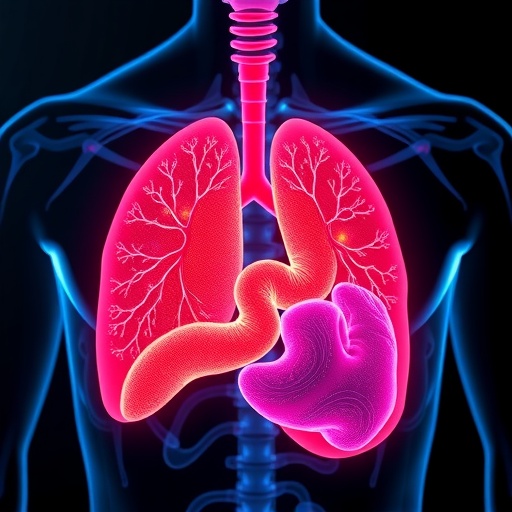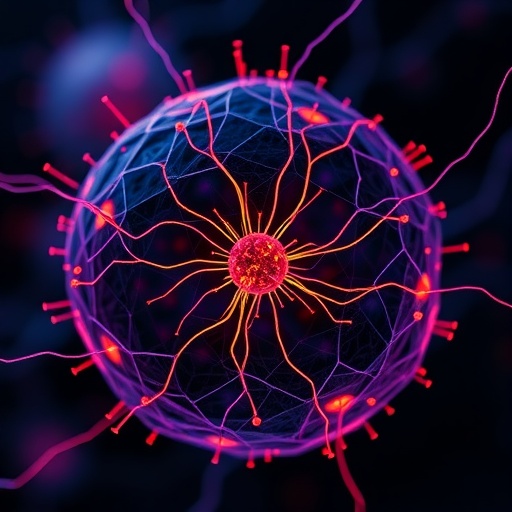
In recent years, the medical community has witnessed a groundbreaking evolution in organ transplantation methods, with emerging technologies redefining how solid organs are preserved and revitalized before transplantation. One of the most exciting advances comes from the domain of normothermic machine perfusion (NMP), a process that holds the promise of improving organ viability and function post-transplantation. This intriguing concept has been at the forefront of discussions among researchers and clinicians, as new findings challenge traditional views on organ preservation and highlight the potential for better transplant outcomes.
Traditionally, solid organs have been preserved using cold storage techniques, a practice that limits the organs’ functionality and vitality as time progresses. Cold storage slows metabolic processes but can also induce specific injuries during the preservation phase. In stark contrast, normothermic machine perfusion provides a warm, oxygenated environment that closely mimics physiological conditions. The idea is to maintain organ functionality and health during transport and storage, significantly increasing the likelihood of successful transplants.
In a recent study, researchers headed by Moein et al. have delved deeper into the mechanisms of NMP, providing new insights that underline its potential therapeutic benefits during the organ preservation phase. The study argues that by actively perfusing organs at normothermic temperatures, it’s possible to restore cellular energy levels, reduce ischemic damage, and minimize the potential for post-transplant complications. This innovative technique provides a new avenue for addressing some of the long-standing challenges associated with organ transplantation.
A key advantage of NMP lies in its ability to maintain and even enhance the viability of organs over extended periods, allowing for increased flexibility in transplant scheduling, which is crucial for organ allocation. This not only optimizes the use of available organs but also improves overall organ transplant dynamics within healthcare systems. By improving preservation, NMP paves the way for an increase in successful transplant surgeries, ultimately benefiting patients and alleviating the burden of donor organ shortages.
Moreover, researchers are beginning to explore the potential interventions that can further enhance the benefits of NMP. Various pharmacological agents are being tested for their ability to modulate responses during the perfusion process. The incorporation of these agents during NMP could help prevent cell death, improve organ repair mechanisms, and support metabolic recovery, thereby optimizing organ function before they are eventually transplanted into recipients.
Another intriguing aspect of this study is its implications for various organ types, including heart, liver, kidneys, and lungs. Each organ might respond differently to NMP, and understanding these distinctions is crucial for tailoring specific interventions to maximize the potential of each organ. For instance, the study detailed how livers and hearts may exhibit different metabolic responses and healing processes during normothermic conditions, underscoring the need for further research and individualized approaches to perfusion strategies.
Furthermore, the researchers highlight the role of the immune system in response to organ perfusion techniques. It is becoming increasingly clear that NMP does not solely focus on cellular metabolism but also modulates the immunological environment of the organ. By preventing excessive inflammatory responses during the storage phase, NMP plays a vital role in preparing the organ for transplantation, thereby reducing the risk of rejection and enhancing integration with the recipient’s body.
The transition towards widespread adoption of NMP techniques will require comprehensive advancements in technology and systematic changes within transplant programs. The need for specialized machines capable of maintaining normothermic conditions, along with trained professionals to operate and monitor these devices, is paramount. Ensuring that these systems become standard practice could significantly alter the landscape of organ transplantation as we know it.
In conclusion, the work conducted by Moein et al. presents a compelling case for the integration of interventions during normothermic machine perfusion of solid organs as a revolutionary step in organ revitalization. By merging traditional transplantation strategies with innovative techniques, the landscape of organ preservation is evolving in exciting ways. As more research unfolds, the hope is that NMP will not only enhance the quality and quantity of transplanted organs but ultimately lead to improved patient outcomes, making a lasting impact on the field of transplantation medicine.
The global transplant community remains hopeful that as these technologies continue to be refined and further validated through clinical trials, the barriers that currently hinder organ transplantation may be lowered. With continuous advancements in medical science and technology, the dream of more successful and life-saving organ transplants could soon become a widespread reality.
The journey is still ongoing, but with each study performed and every advancement achieved, the future of organ transplantation holds immense promise. As the dialogue continues, it is evident that NMP and similar interventions may define the next frontier in organ preservation and transplantation, ultimately transforming lives for countless patients around the world.
Subject of Research: Normothermic machine perfusion and organ revitalization during transplantation.
Article Title: Intervention During Normothermic Machine Perfusion of Solid Organs: a New Era in Organ Revitalization.
Article References:
Moein, M., Whittemore, C., Lin, K.M. et al. Intervention During Normothermic Machine Perfusion of Solid Organs: a New Era in Organ Revitalization.
Curr Transpl Rep 12, 3 (2025). https://doi.org/10.1007/s40472-024-00459-z
Image Credits: AI Generated
DOI: 10.1007/s40472-024-00459-z
Keywords: Normothermic machine perfusion, organ transplantation, organ preservation, ischemic injury, metabolic recovery, organ viability.
Tags: advancements in organ revitalizationcold storage limitations in organ preservationenhancing transplant outcomes with NMPimproving organ viability post-transplantinnovative technologies in medicinenormothermic machine perfusion benefitsorgan preservation techniquesorgan transplantation methodsorgan transport and storage solutionsresearch on organ perfusion mechanismsrevitalizing solid organs for transplantationtherapeutic benefits of machine perfusion




